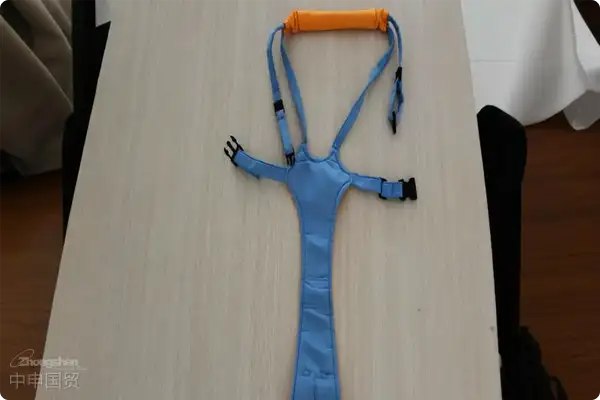- Shanghai Zhongshen International Trade Co., Ltd. - Two decades of trade agency expertise.
- Service Hotline: 139 1787 2118
Contents
ToggleImport of baby walking belts:foreign tradeAgent's "First Steps" Guide
As a seasoned foreign trade professional with 20 years of experience, I'm often asked: "What should we pay attention to when importing baby walking harnesses?" Today, let me guide you through this special "walking" journey in the most down-to-earth way.

I. Pre-import "Warm-up Exercises": Preparatory Work
Just as choosing a walking belt for a baby requires taking measurements, sufficient preparation should also be done before import:
- HS Code Positioning:Walking belts are usually classified under 6307.90.90 (other manufactured goods), with a tariff of about 8 - 10%. Special attention should be paid to whether legal inspection is involved.
- Qualification Preparation:- Clearly defineimport and exportDual - header customs declaration can be adopted, but the agency agreement needs to be confirmed in advance.
- Document Collection:It is recommended to verify through the following methods:Quality inspection report (EN 13210-1 standard), and a sample of the Chinese label are all indispensable.
I remember a customer last year who, due to not making a pre - Chinese label, was required to make rectifications at the port, spending an extra two weeks and tens of thousands of yuan in warehousing fees. This lesson tells us: Preparation work is like the buckle of a walking belt and must be fastened firmly!
II. International Transportation: Fasten the "Safety Belt" for the Walking Harness
The following "safety hazards" are most likely to occur during the transportation process:
- Packaging Issues:The metal fasteners of the walking belt may be misjudged as dangerous goods. It is recommended to conduct a transportation appraisal in advance.
- Temperature and Humidity Control Requirements:The materials of some high - end walking belts are sensitive to humidity, and special attention should be paid to indicating the transportation conditions.
- Document Connection:Maritime TransportationThe product name on the bill of lading must exactly match that on the customs declaration form. For example, avoid writing "baby harness" as "infant strap."
Tips:Air TransportationAlthough it is fast, shipping is more cost - effective for light and bulky goods like walking belts. It is recommended to plan the logistics 45 days in advance.
III. Domestic Customs Clearance: The "Quality Inspection Game" of Customs
The three most common "stumbling blocks" during customs clearance:
- Legal Inspection Process:Walking belts are goods subject to legal inspection. 7 - 10 working days should be reserved for CIQ inspection.
- Label Review:Safety warnings such as applicable age and maximum load - bearing must be included (refer to the customs consumption tips).
- Inspection Focus:The customs pays special attention to the tensile test of small parts (to prevent accidental swallowing) and the inspection of sharp edges.
Last year, we had a case where a batch of baby walkers was required to be returned due to the absence of the warning statement: "Do not use for more than 1 hour at a time." This reminds us: customs clearance is like using a baby walker—you must strictly follow the "instructions"!
4. "After-sales Service" After Pickup
The arrival of goods is not the end, but the starting point of sales:
- Quality tracking:It is recommended to reserve at least 3% of spare parts to deal with possible after - sales problems
- Voucher management:All original inspection reports and clearance certificates should be properly kept for more than 5 years
- Market feedback:Establish a mechanism for collecting product usage problems (especially feedback on the durability of buckles)
Keep in mind the friendly reminder from customs: Replace damaged walking harness accessories promptly, and also regularly inspect the importer's "supply chain accessories" (such as documents and channels)!
V. Special suggestions for importers
Drawing from years of experience, here are three "safety locks" for you:
- Choosing a manufacturer with EN71/EN13210 certification is more important than a low price
- For the first import, it is recommended to do a pre - inspection of samples to avoid problems found after a large quantity arrives at the port
- Cooperate with professional baby productsImport RepresentationThey are familiar with the special requirements of various ports for baby products
To conclude with an industry saying: Importing is like teaching a baby to walk—you need to stride forward boldly while also proceeding with caution. May this guide serve as your "walking harness" on the import journey. For more professional support, feel free to reach out to me, your foreign trade "nanny"!?
Related Recommendations
? 2025. All Rights Reserved. Shanghai ICP No. 2023007705-2  PSB Record: Shanghai No.31011502009912
PSB Record: Shanghai No.31011502009912










